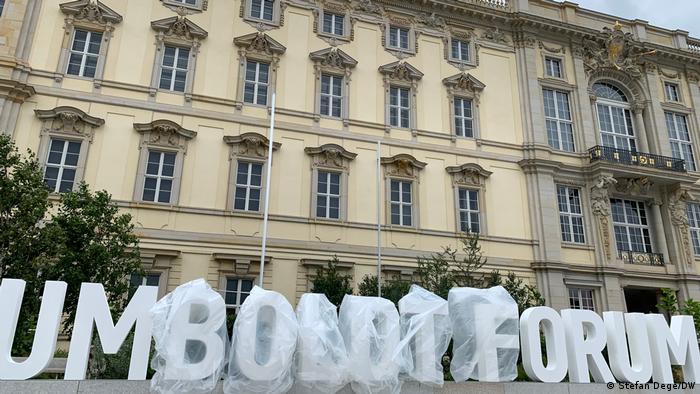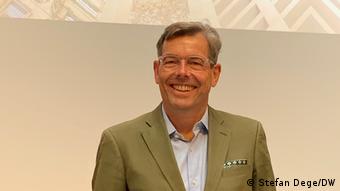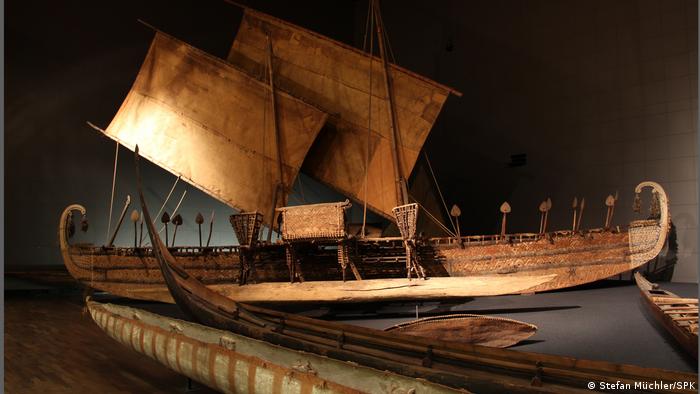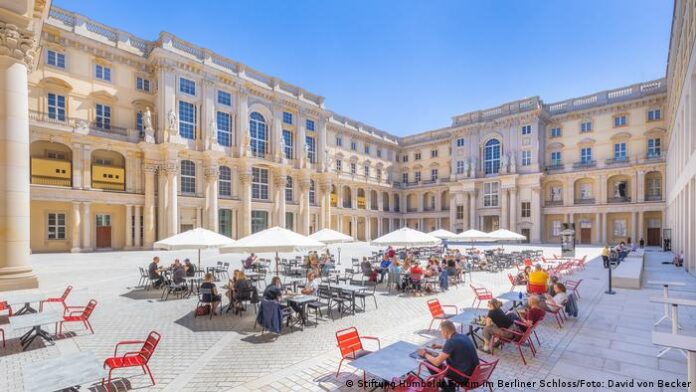After years of delays, Berlin’s new Humboldt Forum has finally welcomed the public even as it remains at the center of debate about colonialism and museum collections.
On the banks of the Spree River between Brandenburg Gate and Alexanderplatz, a massive new building towers into the Berlin sky. It stands on the former site of Berlin’s City Palace, whose war-damaged remains were blown up in 1950 and replaced by East Germany’s Palace of the Republic. In the newly built Humboldt Forum, which opened its doors on Tuesday, everything still smells fresh.
Just a few days ago, the new subway station was opened here with much pomp and circumstance; it provides access to the Museumsinsel, or Museum Island.
In 2002 the German parliament agreed to construct the cultural complex, with completion expected in 2019, the Humboldt anniversary year. But work dragged on, construction costs exploded. After a virtual opening in December 2020, part two of the opening now follows in installments, with the basement, the ground floor and the first of the three floors above becoming publicly accessible.

Debate over the dome’s cross
The Forum has long been the subject of criticism, including for its design choices. Italian star architect Franco Stella reconstructed a Baroque facade for three sides of the Humboldt Forum. The building is topped by a dome with angel figures and a cross that can be seen from afar. A gold-adorned statement by Prussian King Frederick William IV (1795-1861) calls for the submission of humanity to Christianity.

The fact that the Ethnological Museum and Dahlem’s Museum of Asian Art are to move into the partial reconstruction of a Prussian palace likewise prompted criticism in advance, as the original palace the building replicates was a symbol of colonial power and genocide.
The Humboldt Forum’s collection also makes it a hot spot for the current colonialism debate. Is it still possible today to exhibit works of art and artifacts that ended up in German museums under unexplained circumstances, in which colonialism possibly played a significant role?
The Benin Bronzes and the Luf boat
At the moment, the debate revolves primarily around the Benin Bronzes, and the so-called Luf boat from what is now Papua New Guinea. The Benin Bronzes, valuable metal panels and sculptures from the Royal Palace of Benin, reached Europe and the US by the thousands after the British looted Benin City in 1897. Some of them entered the collections of German museums via art markets and auctions.
According to a DW interview with Federal Commissioner for Culture and the Media Monika Grütters, “the context of origin is a context of injustice.” Germany is willing to return the bronzes, and negotiations with Nigeria — the present-day country where the Kingdom of Benin was located — are currently underway.
But, for now, the bronzes are to be shown in two halls of the Humboldt Forum, as is the Luf boat.
It is thought that German colonists may have looted the boat from the Indigenous people of Luf Island, part of Papua New Guinea’s Bismarck Archipelago, in the late 19th century, during the violent colonial regime.
“Germany’s colonial past has long been a blind spot in our culture of remembrance,” Grütters said.
More than an exhibition hall
The Humboldt Forum is supposed to help change this. General Director Hartmut Dorgerloh has stressed that it aims to go beyond the traditional exhibition role and be a meeting place and a space for experiments.
The museum’s programs are to reflect three core themes: the history of the site, the brothers Wilhelm and Alexander von Humboldt’s global discoveries, and an examination of colonialism and its consequences.

“Complex and painful topics such as looted art, provenance research and restitution issues will certainly be dealt with here,” Dorgerloh said, “but we want to be very actively involved in these debates.”
Despite its historic facade, the building on the banks of the Spree River centers around transparency. Visual axes crisscross the courtyard and provide a view out into neighboring districts. Inside there are movie theaters, stages for music and dance, and halls for exhibitions, conferences, and symposia, all equipped with the latest event technology. The interior space measures over 40,000 square meters (431,000 square feet).
An exhibition on the ivory trade
Dorgerloh’s statement is already evident in the opening exhibition, “Terrible Beauty: Elephant — Human — Ivory.” With 200 exhibits from museums around the world, the show addresses the brutal history of the ivory trade. Visitors can view detailed carvings, take part in a broad series of discussions and view a range of films. The Humboldt Forum collaborated with museums and experts around the world to create the exhibition.
Other parts of the opening include a show in the palace basement that, together with a video panorama and 35 presentations located throughout the building, introduces visitors to the history of the site.
In the “Take a Seat!” exhibition, children can playfully explore the cultural technique of sitting. On the second floor, the Humboldt University’s ecology exhibition, “After Nature,” and the show “BERLIN GLOBAL,” by Kulturprojekte Berlin and the Stadtmuseum Berlin, which looks at the German capital’s global networking, have also opened their doors.
Some display cases are still empty; exhibits are still packed and or have not yet arrived.
There is plenty of memorabilia to be had in the museum shop, with everything from T-shirts, coffee mugs, refrigerator magnets, even replicas of ceiling lamps that once hung in the former East German Palace of the Republic. But the museum shop’s bestselling item is a postcard that reads: “Wilhelm, Alexander and I” — a nod to the German scientists and explorers Wilhelm and Alexander von Humboldt, after whom the Forum is named.

























